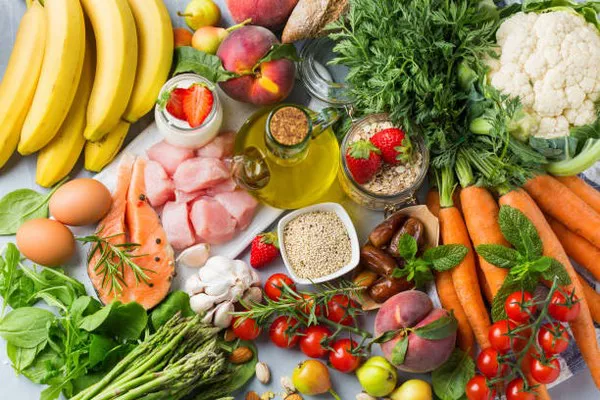In a world flooded with weight loss advice and quick fixes, many people are turning to “almost zero-calorie” foods as a potential solution for shedding pounds. Popularized by social media pages like Fit Mom Club, these foods include everyday staples like cucumbers, apples, and blueberries, which are claimed to help reduce calorie intake while promoting fullness. But do these low-calorie foods really work as promised? We spoke to Dr. Rakesh Gupta, a senior consultant in internal medicine at Indraprastha Apollo Hospitals, to better understand the science behind these foods and whether they can lead to “incredible weight loss.”
The ‘Zero-Calorie’ Foods List
On Instagram, Fit Mom Club shared a list of 20 foods they claim have “almost zero calories.” The post encouraged followers to incorporate these low-calorie options into their meals to boost meal volume without significantly increasing calorie counts. Here’s the full list of these foods:
Vegetables:
- Cucumber
- Bottle Gourd
- Indian Round Gourd
- Bitter Gourd
- Fenugreek Leaves
- Spinach
- Cabbage
- Broccoli
- Zucchini
- Carrot
Fruits:
- Papaya
- Guava
- Apple
- Pear
- Strawberries and Blueberries
Spices and Herbs:
- Curry Leaves
- Coriander Leaves
- Ginger
- Garlic
- Turmeric
These foods are not only low in calories but also rich in fibre, which promotes digestion and helps in managing weight. Dr. Gupta explains that such foods are particularly beneficial for those managing conditions like PCOD (Polycystic Ovarian Disease), thanks to their low glycemic index and anti-inflammatory properties.
Do These Foods Really Lead to Weight Loss?
Dr. Gupta confirms that including low-calorie foods in your diet is indeed an effective strategy for weight management. “Low-calorie foods are often high in water and fibre, which contribute to their low energy density. This allows you to eat larger portions without significantly increasing your calorie intake,” he says. For instance, leafy greens such as spinach and kale are nutrient-dense, providing bulk and fibre while keeping calorie counts low. Additionally, vegetables like zucchini and cauliflower can be used as substitutes for higher-calorie foods like pasta or rice, making meals more filling without excess calories.
However, Dr. Gupta stresses that while these foods can help increase meal volume and contribute to weight loss, they should not be relied upon exclusively. “Weight loss is about a holistic approach—it’s about eating nutrient-dense foods while balancing your macronutrients and incorporating regular physical activity.”
The Role of Protein, Fibre, and Healthy Fats
To maximize the benefits of low-calorie foods, Dr. Gupta recommends pairing them with adequate protein and healthy fats. Foods like Greek yogurt, lean meats (chicken breast), and legumes (lentils, black beans) are rich in protein and help increase satiety, which can prevent overeating. Healthy fats, such as those found in avocados and olive oil, further enhance meal satisfaction and support long-term weight loss by stabilizing blood sugar levels.
“Combining fibre, protein, and fats in your meals slows digestion, keeps you fuller for longer, and reduces cravings,” Dr. Gupta explains.
Practical Meal Ideas for Incorporating Low-Calorie Foods
Here are some simple ways to incorporate these principles into your daily meals:
Breakfast: Oatmeal topped with Greek yogurt, berries, and a sprinkle of flaxseeds for a fibre-packed start to your day.
Lunch: A large salad made with mixed greens, grilled chicken, chickpeas, and a light vinaigrette dressing for a nutrient-dense meal.
Dinner: Zucchini noodles served with marinara sauce and turkey meatballs for a low-calorie, satisfying dinner option.
Final Thoughts
While the notion of “almost zero-calorie” foods can be enticing for those looking to lose weight, Dr. Gupta emphasizes that these foods are best used as part of a balanced, nutrient-rich diet. By focusing on high-volume, low-calorie foods that are also rich in protein, fibre, and healthy fats, you can create a sustainable eating plan that supports both weight loss and overall health.
Ultimately, the key to effective weight loss lies in a balanced approach: incorporating healthy, low-calorie foods, exercising regularly, and managing stress levels to promote well-being. As Dr. Gupta concludes, this mindful approach to eating not only fosters healthier habits but also ensures that you feel satisfied after meals, helping you stay on track with your weight loss goals.
Related Topics:
Should You Eat After Exercise for Weight Loss


